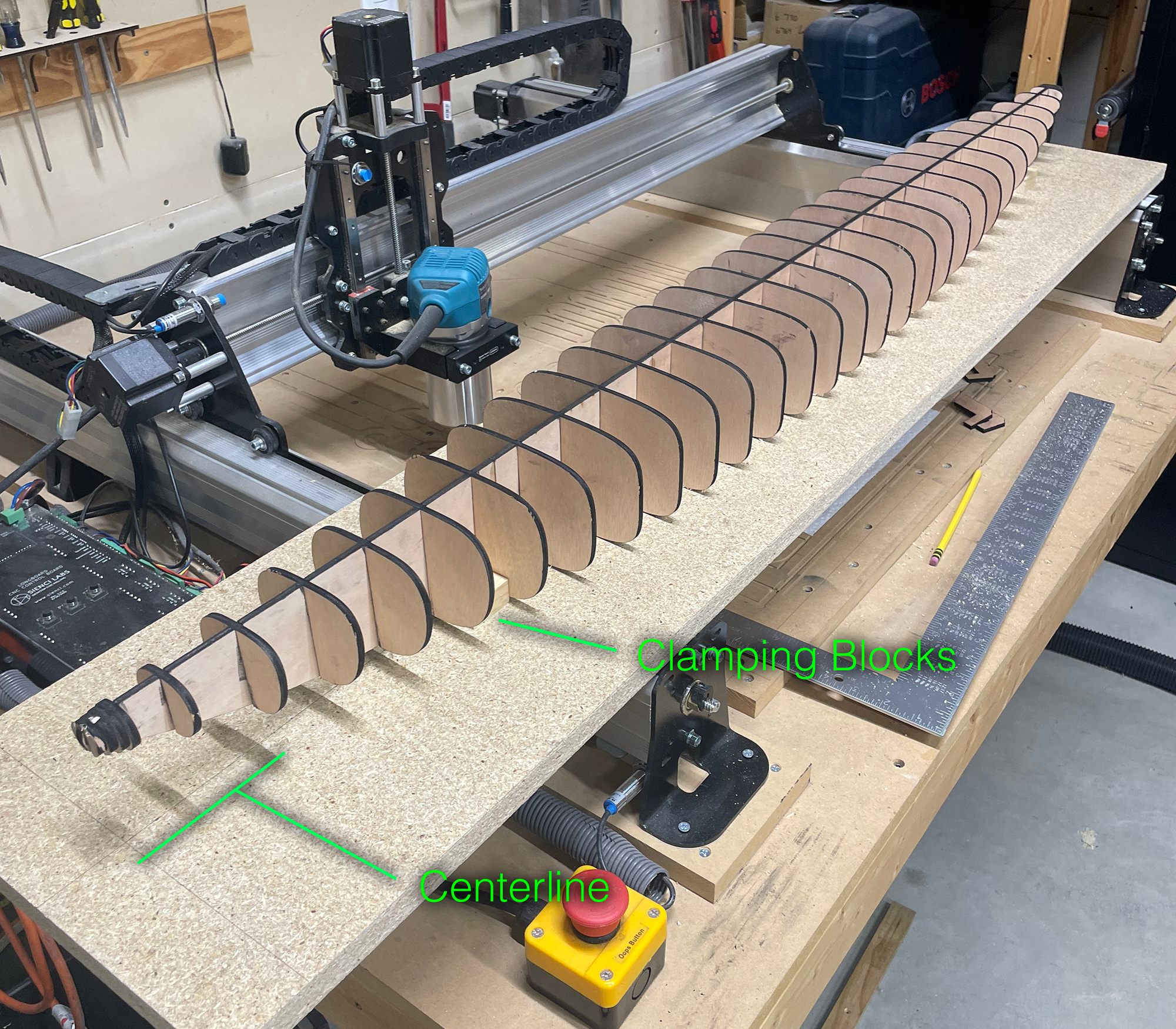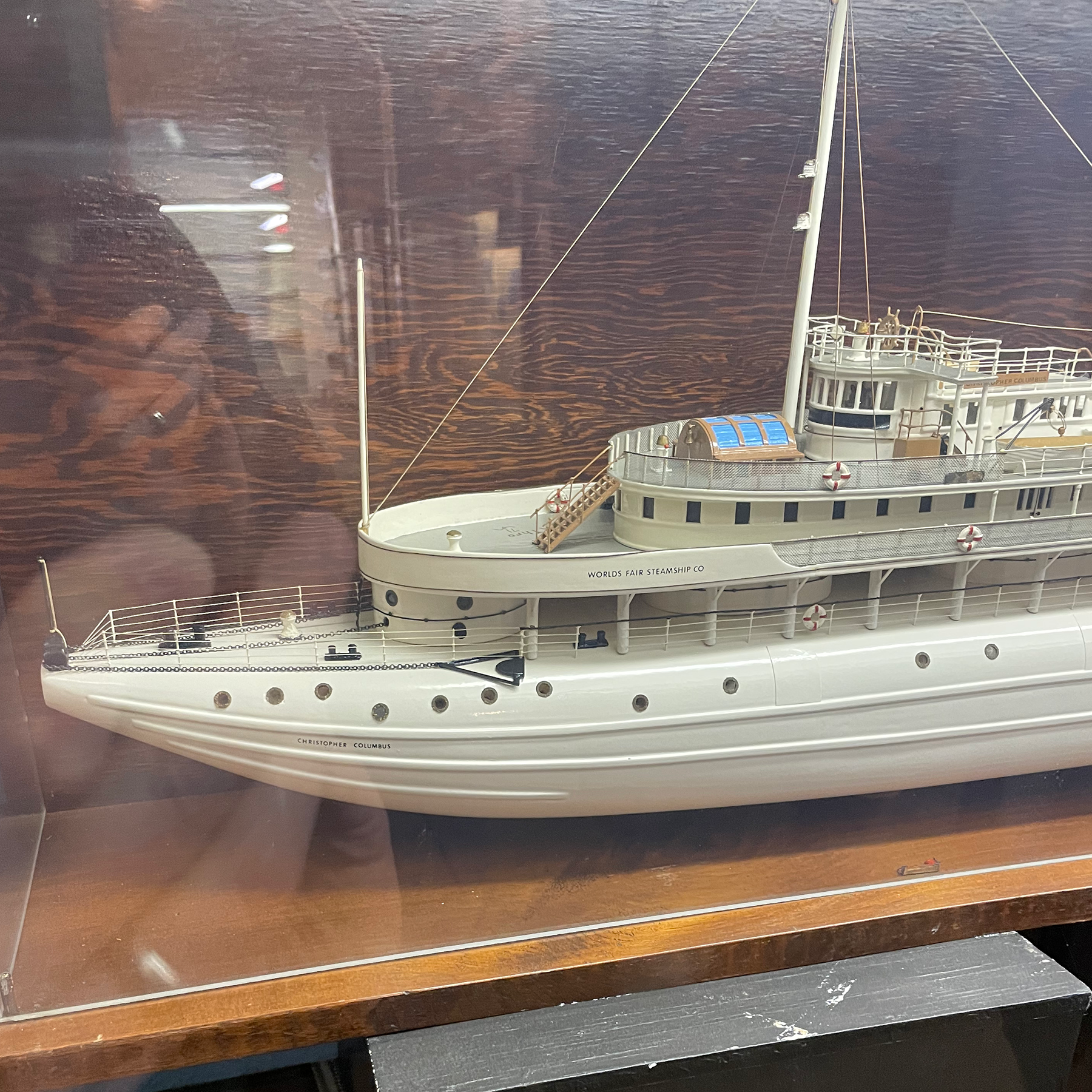Laying the Keel
Laying the keel and starting the build of the SS Christopher Columbus.
A ship’s construction officially starts with laying the keel — the spine of the ship. This is as true for a full-sized ship built in a dry dock as it is with a model ship on a workshop table. The real SS Christopher Columbus had its keel laid in 1892 in Superior, Wisconsin by the American Steel Barge Company. The 1:80 scale Columbus had its keel laid on September 26 of 2025 in Rochester, Minnesota.
Prior to that date, digital work began by creating the hull in CAD software to make early progress on some of the reconstruction and engineering. The model of the Columbus is being constructed with a false keel and ribs made of 5mm plywood. Ribs are spaced equally throughout the length of the ship and make up the general shape of the hull. The plywood was then cut using my xTool laser cutter (my favorite shop tool).
The hull as designed in Fusion 360 before being sent to the laser cutter.
For wooden model ships like this one, it is imperative that the keel be kept perfectly straight during initial construction of the hull. Without this crucial step, the subsequent steps of the build will be negatively impacted by compounding errors. In the photo below, you can see the jig that was used to maintain alignment to a centerline. The keel is clamped about every fifth rib with scrap wood blocks to maintain its straightness along the full length. Each rib is then glued and clamped at precise right angles from the keel using 1-2-3 machine blocks. Investment in precision for this step means that the hull will be both straight and symmetric.
A simple jig to maintain keel alignment to a centerline.
The Historical Research
Technical drawing of the SS Christopher Columbus
A technical drawing of the SS Christopher Columbus.
The research phase of historical model building is both my favorite and the most challenging. It is delightful to pour over the historical records and artifacts to learn about the subject matter. It’s a bonus when travel is required to go hunt through museums or archives searching for reference material. My goal is always to represent the original subject as best as possible given the available time, materials, and scale. The challenge, however, is when there isn’t enough reference material available to authentically reproduce the entire model. Artistic license may be necessary to fill in the missing details, though that is always minimized as much as possible.
Fortunately for this project, there are two primary sources that provide most of the information needed. A set of technical drawings was found at a Michigan library. However, the drawings are missing key details. The second source comes from a recent visit I made to the SS Meteor Museum in Superior, Wisconsin which has on display another model of the SS Christopher Columbus (just like the one I am building).
The next challenge to deal with is reconciling some of the major changes that have occurred throughout the life of the ship. Historical photos show that the Columbus had several different paint schemes throughout its life. Even more dramatically, certain photos show that an entire deck was added to the ship in its later years. All of these variances require working with the client to determine what is required and feasible with the reference material that’s available.
The Return Journey of the SS Christopher Columbus
SS Christopher Columbus docked in Bayfield, Wisconsin.
University of Wisconsin-Madison - Superior Special Collections and Archives
SS Christopher Columbus docked in Bayfield, Wisconsin.
University of Wisconsin-Madison - Superior Special Collections and Archives
A one-of-kind passenger ship was once seen sailing around the Great Lakes during the start of the 20th century. Her name was the SS Christopher Columbus. Though she was less than a third of the length of today’s largest cruise ships and was unlike any other passenger vessel that has ever sailed, she would become a unique and historic icon of the North Shore.
The Columbus had a 40-year career and is estimated to have carried more than 4 million passengers until she was scrapped in 1937. She would often visit ports all around the Great Lakes during her prime, including a small logging and fishing town of Bayfield, Wisconsin.
Just a few days before my 45th birthday, the Bayfield Maritime Museum commissioned me to take on the project of building a 1:80 scale model of the SS Christopher Columbus for their collection. The museum wants to have a model of the historic ship that celebrates its connection with Bayfield. Once completed, this model will be the largest I’ve personally ever built, measuring nearly five feet long.
The museum also had a special request. They asked that I chronicle the build over the next several months so that others can learn how these models are made. Along the way, I will also share some of the details and stories of the ship and techniques for its reconstruction.
It has been nearly 90 years since Bayfield has seen this ship at its dock. I am pleased to be part of bringing this ship back to them next summer. Special thanks to the Bayfield Maritime Museum for its interest and support in this project.








